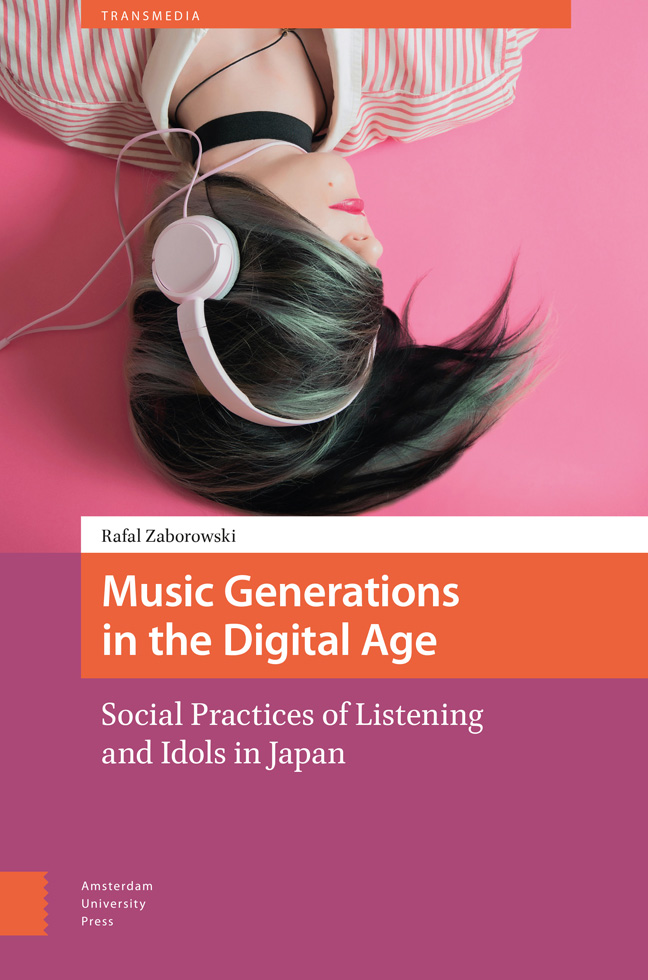Introduction: Listening, Music, Generations
Published online by Cambridge University Press: 20 February 2024
Summary
Abstract: This chapter introduces the author’s interest in the study, the aims of the book, and the approach to audiences and listening. The chapter also gives context to the presence of music in Japan and introduced theoretical, conceptual and methodological challenges surrounding research on Japanese music audiences.
Keywords: Listening, music, generations, audience, Japan, fieldwork
Dancing about Architecture?
Writing about music has always been difficult. Our personal experiences, just like mine detailed in the Preface, seem to suggest that music is hugely relevant to our lives, that it is embedded in and revealing of our routines and practices, that it is one of the meaningful threads in our everyday existence and the symbolic exchange. However, it is difficult to analyse what is actually going on when we interact with music, because on the one hand, music is very personal, and on the other, it is situated strongly in the social sphere of our lives.
When we think about music, we often imagine it as a social, cohesive force, much more than we do about new media. The academic and media debates suggesting that technology, and the internet, are driving us apart (Turkle, 2011) do not focus on music as often as they focus on social media or video games. Sure, moral panics have concerned various musical genres and artists (Jenkins and Maier-Katkin, 1992; Cohen, 2002; Wright 2000), but there has been much more research on cultures, sub-cultures, groups and collectives (now and in the past) which have told us that music can be understood as social behaviour or as mass communication, yet it is always strongly tied to group identity and belonging (Frith, 1978; Hebdige, 1979; Cashmore, 1984; Born and Hesmondhalgh, 2000).
Is this still true in the digital music soundscape, where audiences interact with songs more in isolation from each other: through individual playlists, personalised streaming sites, personal headphones and devices – and yet, through their generational experiences? In 1936 Walter Benjamin famously argued that with mechanical reproduction a certain mode (‘aura’) of engaging with art disappeared, and this opened up the potential to experience art differently. It happened with the invention of photography and film, as Benjamin noted, but we can easily make the connection to recorded music (cf. Benjamin, 1977).
- Type
- Chapter
- Information
- Music Generations in the Digital AgeSocial Practices of Listening and Idols in Japan, pp. 13 - 40Publisher: Amsterdam University PressPrint publication year: 2023



